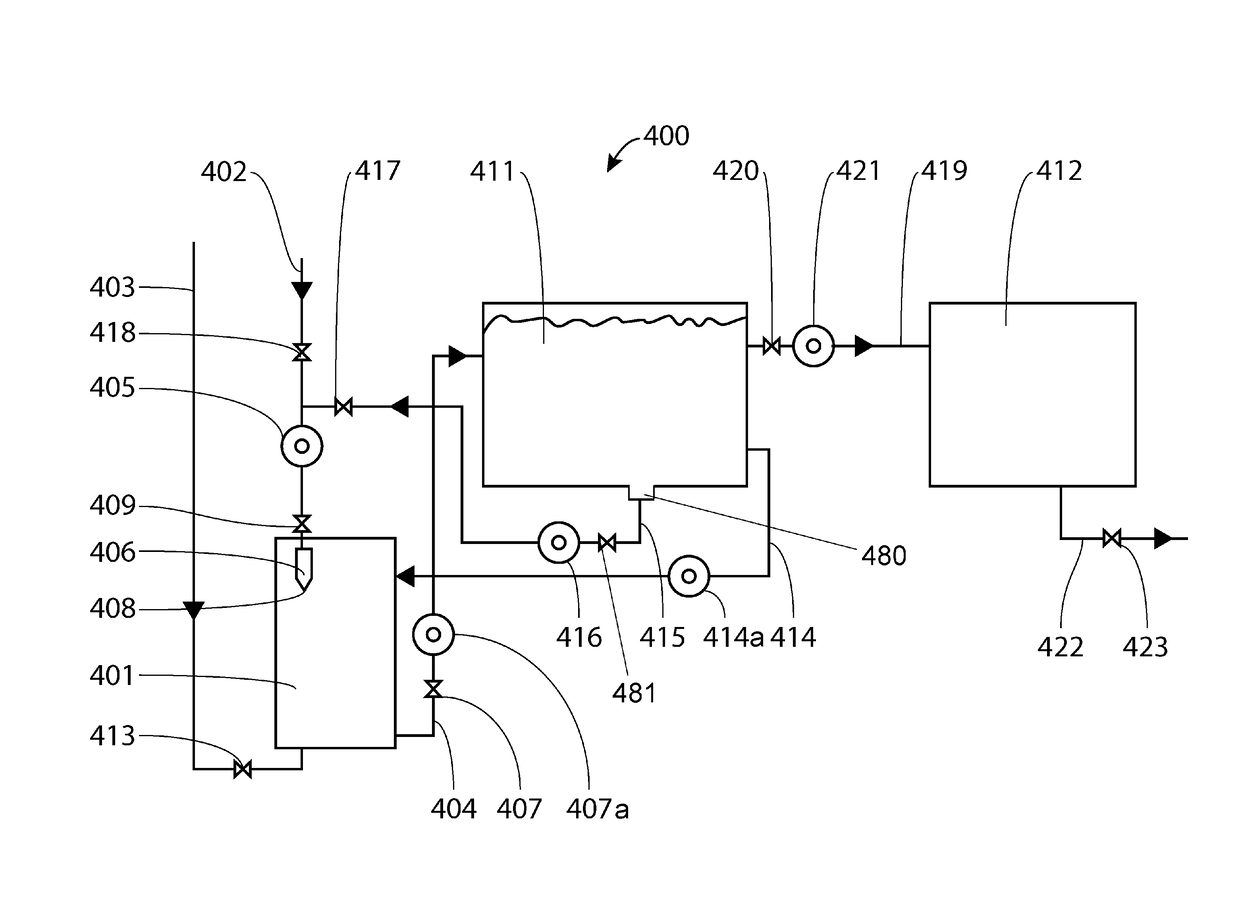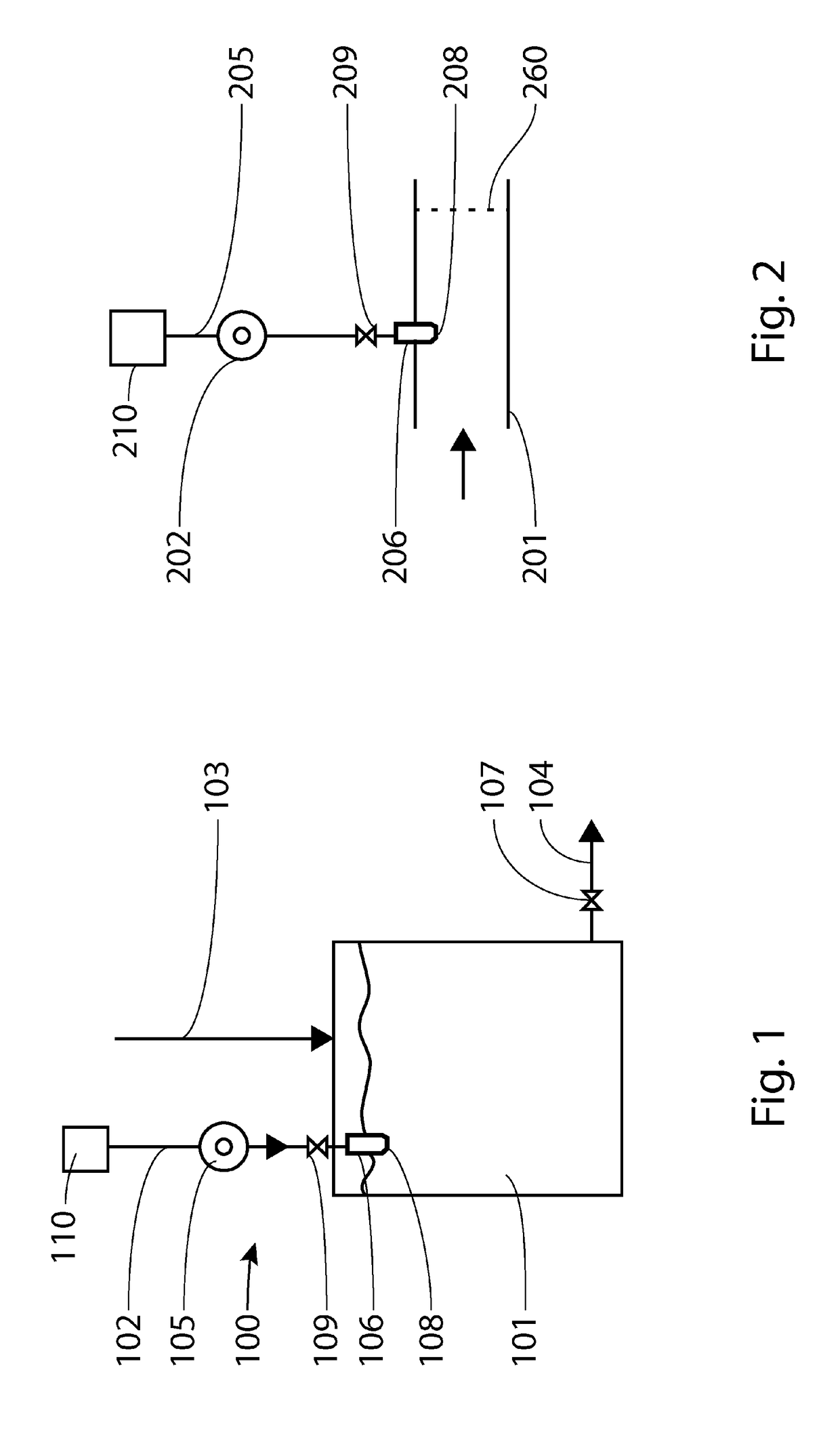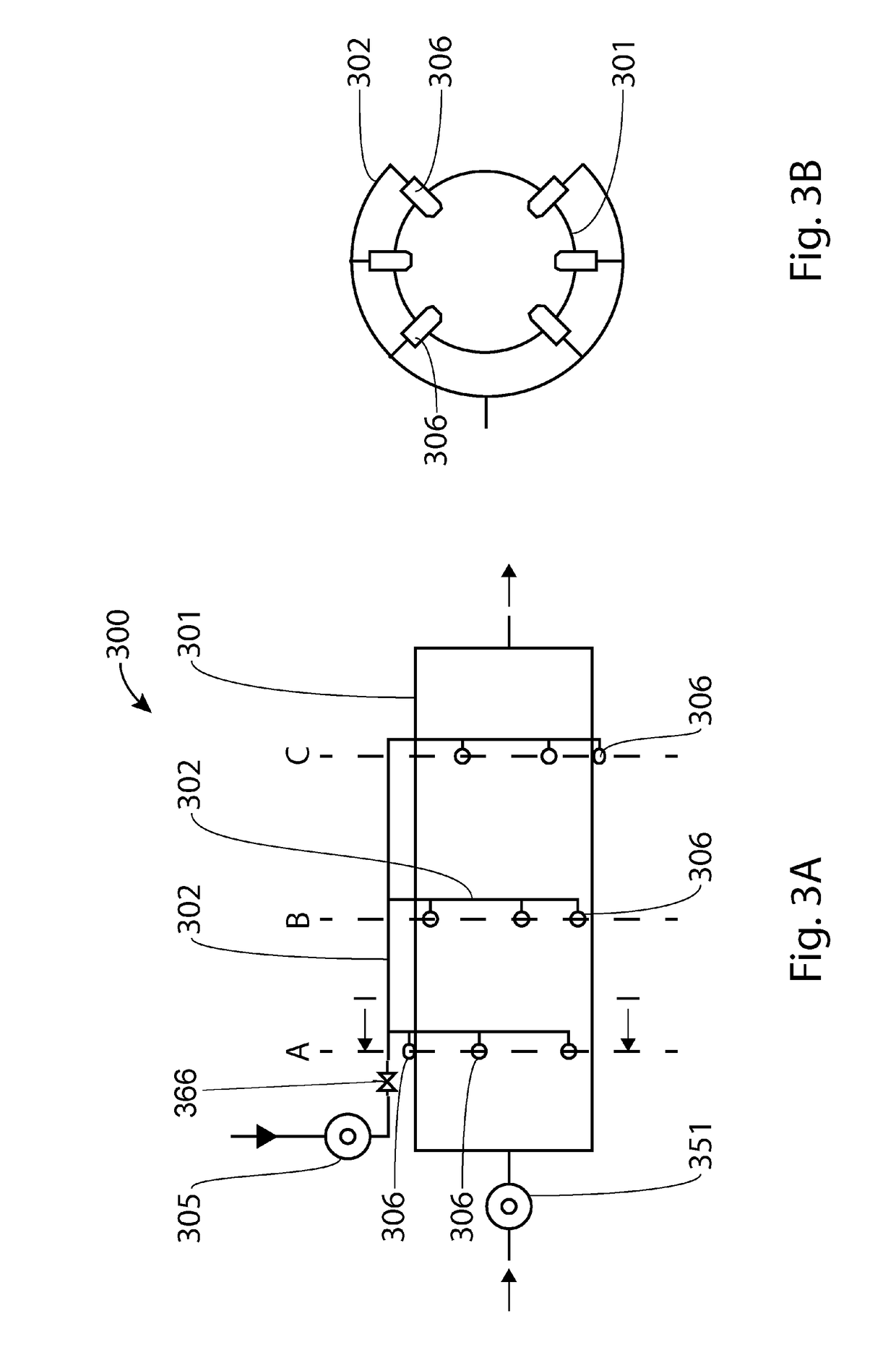Method of preparing an emulsion, a device for preparing said emulsion , and a vehicle
a technology of emulsion and emulsion solution, which is applied in the direction of mixing method, non-fuel substance addition to fuel, mixer, etc., can solve the problems of less energy efficiency, and achieve the effect of reducing the energy required and reducing the stability of the emulsion
- Summary
- Abstract
- Description
- Claims
- Application Information
AI Technical Summary
Benefits of technology
Problems solved by technology
Method used
Image
Examples
experiment i
[0121
[0122]An installation substantially according to FIG. 4 was used to prepare an emulsion of water and diesel fuel by the method of the invention. The first vessel 401 had internal dimensions of 80×25×110 mm (height×width×depth). Thus, the first 401 vessel had a first upright wall (of 25 mm wide and 80 mm high) and opposite of the first upright wall a second upright wall of the same dimensions.
[0123]Compared to FIG. 4, there were the following differences in the experimental set-up:[0124]For the supply of fresh diesel fuel, supply conduit 403 ended in the second vessel 411.[0125]The return circuit 414 and the discharge conduit 404 were connected to the first upright wall, with the return circuit 414 being 2 cm from the top and the discharge conduit 404 being 2 cm from the bottom of the first vessel 401.[0126]The injector 406 was mounted in second upright wall 2 cm from the bottom, i.e. facing the opening of the supply line 414. This allowed for operation in counter flow with the ...
experiment ii
[0169
[0170]Further experiments were performed with a series of vegetable oils (soy oil, sunflower, olive oil, rice bran oil, rape seed oil), and with a mineral oil (engine oil 5W30).
[0171]The experiments were performed with the following conditions:[0172]final water concentration 0.5% vol. / vol. (water / emulsion).[0173]the second liquid was held in a relatively wide glass container (diameter 12 cm and height 13 cm; volume about 860 ml) or a relatively high glass container (diameter 6 cm and height 20 cm; volume about 500 ml).[0174]the second liquid was stirred manually using a spatula after each pulse so as to avoid locally high concentrations of water droplets.
[0175]spraying was performed using an Aquamist nozzle (nozzle channel diameter 0.4 mm; article number 806.501C).
[0176]The spray depth of water (40 Bar; about 40° C., v about 103 m / s) in the second liquid (room temperature) was between 12 and 20 cm. W was 4.3*103 kg*m / N*s2. The pulse duration was 0.04 s at 0.52 ml / pulse.
[0177]Fo...
experiment iii
[0180
[0181]Experiment II was repeated with gasoline in a glass container with a diameter of 22 cm and a height of 20 cm; total volume about 1.7 liter.
[0182]When the experiment was performed with water of 40° C. and a pressure of 40 Bar, the spray depth was about 20 cm. (W was 4.3*103 kg*m / N*s2). The final concentration of water was 0.25% vol. / vol. (water / emulsion).
[0183]After 3 minutes 10% vol. / vol. of the water injected had separated, and after 30 minutes more than 90% vol. / vol. of the water had separated.
[0184]The results are somewhat adversely affected because the spray did reach the bottom of the container.
[0185]Using higher values of W, better results were obtained.
[0186]With 50 Bar and 50° C. (W was 5.1*103 kg*m / N*s2), final concentration of water 0.036% vol. / vol., less than 1% vol. / vol. of water had separated after 3.5 hours.
[0187]With 70 Bar and 70° C., the pulse duration was 0.034 s at 0.52 ml / pulse. (W was 6.7*103 kg*m / N*s2). The final concentration of water was 0.25% vol....
PUM
| Property | Measurement | Unit |
|---|---|---|
| temperature | aaaaa | aaaaa |
| temperature | aaaaa | aaaaa |
| vol. % | aaaaa | aaaaa |
Abstract
Description
Claims
Application Information
 Login to View More
Login to View More - R&D
- Intellectual Property
- Life Sciences
- Materials
- Tech Scout
- Unparalleled Data Quality
- Higher Quality Content
- 60% Fewer Hallucinations
Browse by: Latest US Patents, China's latest patents, Technical Efficacy Thesaurus, Application Domain, Technology Topic, Popular Technical Reports.
© 2025 PatSnap. All rights reserved.Legal|Privacy policy|Modern Slavery Act Transparency Statement|Sitemap|About US| Contact US: help@patsnap.com



